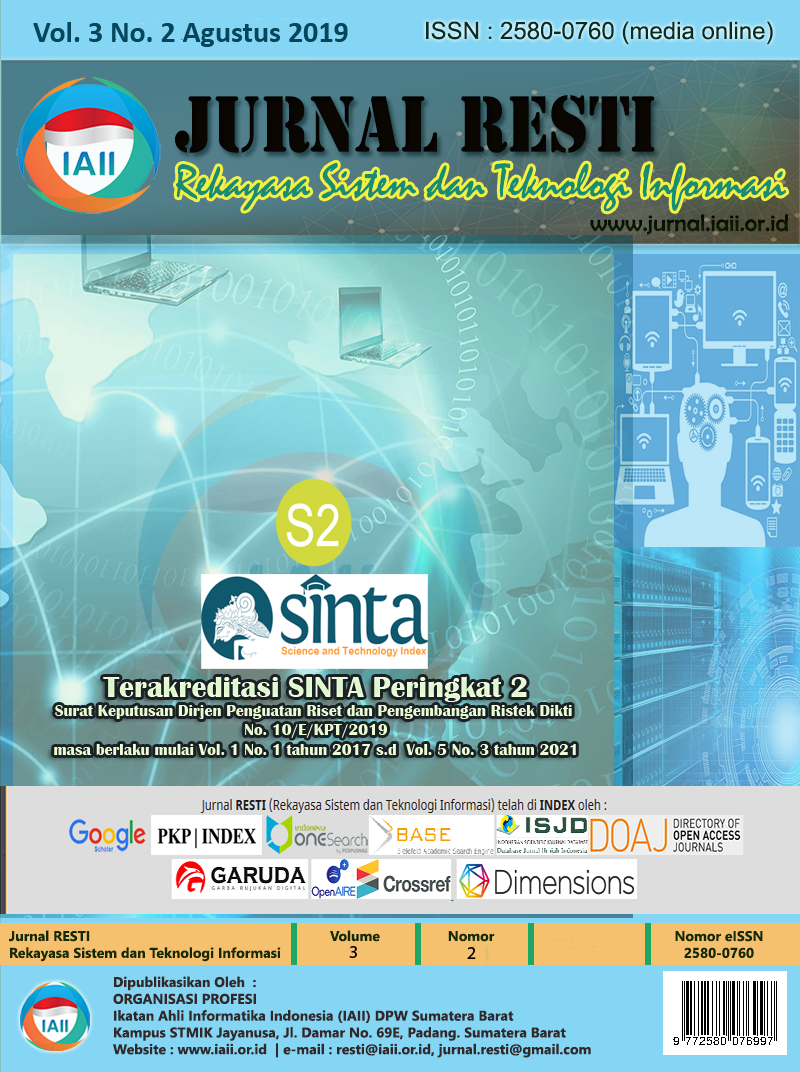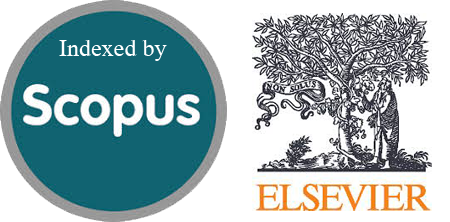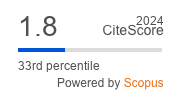Sistem Temu Kembali Informasi Pada Gejala Autisme Dengan Metode Vector Space Model
Abstract
Information is now very easy to get anywhere. Information technology, especially the internet, strongly supports the exchange of information very quickly. The internet has become an information and communication media that has been used by many people with many interests, especially in taking large-scale information data, Unfortunately the information presented is sometimes less relevant. Quality information is influenced by relevance, accuracy and on time. However, there are not many effective search systems available. This study discusses the implementation of an information retrieval system to find and find symptoms of autism disorders using the Vector Space Model (VSM) method. Vector Space Model (VSM) is a model used to measure the similarity between a document and a query. In this model, queries and documents are considered vectors in n dimensional space. Where n is the number of all terms listed. The purpose of this study was to design an information retrieval software to find and match the symptoms of autism disorders. By using Vector Space Model, it is hoped that it can provide a solution to the search engine to provide text matching information in the database using certain keywords, the results of the matching are presented in the form of ranks.
Downloads
References
[2] Hadi, Musa Wa’el., Fadi Thabtah and Hussein Abdel-Jaber. A Comparative Study Using Vector Space Model With K-Nearest Neighbour on Text Categorization Data. Proceedings of The World Congress on Engineering. 2017. ISBN:978-988-98671-5-7.
[3] Man Yua, Yuan Xin Ouyang and Zhang Xiong. A Text Categorization Methode Using Extended Vectore Space Model By Frequent Term Sets. Journal of Information Science and Engineering 29. 2013. 99-114.
[4] Singh, Nath Jitendra and Sanjay Kumar Dwivedi. Analysis of Vector Space Model in Information Retrieval. International Journal of Computer Application (IJCA). 2012. 14-18.
[5] Priambodo, Bagus. Answer Search Indonesian Language Hadith Using Vector Space Model in PDF Document. International Research Journal of Computer Science (IRJCS). 2017. ISSN: 2393-9842. Vol.4, Issue 08. 1-5.
[6] Ogheneovo, E. E. and R. B. Japheth. Application of Vector Space Model to Query Ranking and Information Retrieval. International Journal of Advanced Research in Computer Science and Software Engineering. 2016. ISSN: 2277 128X. Vol.6, Issue 5. 42-47.
[7] Laith Mohammad Qasim Abualigah. Applying Genetic Algorithms To Information Retrieval Using Vector Space Model. International Journal of Computer Science, Engineering and Application (IJCSEA). 2015. DOI: 10.5121/ijcsea.2015.5102. Vol.6, No.1. 19-28.
[8] Slamet, C. A R Atmadja, D S Maylawati, R S Lestari, W Darmalaksana and M A Ramdhani. Automcated Text Summarization for Indonesian Article Using Vector Space Model. The 2nd Annual Applied Science and Engineering Conference (AASEC). 2017. DOI: 10.1088/1757-899/X/288/I/012037.
[9] Lartariyatham, Sasithorn., Pongpisit Wuttidittachotti, Somchai Prakancharoen and Sakda Arj-ong Vallipakorn. Comparative Weighting Methods of Vector Space Model. ARPN Journal of Engineering and Applied Sciences. 2017. ISSN: 1819-6608. Vol.10, No.3. 1316-1323.
[10] Bansal S. Comparison Between The Probabilistic and Vector Space Model For Spam Filtering. Internation Journal of Computational Intelligence Techniques. 2012. ISSN: 0976-0466. Vol.3, Issue 2. 82-85.
[11] R. K. Makhijani and I. N. Bharambe. Design of Search Engine Using Vector Space Model for Personalized Search. Internation Journal of Computer Science and Mobile Computing (IJCSMC). 2013. ISSN: 2320-088X. Vol.2, Issue 3. 63-66.
[12] Eman Al Mashagba, Feras Al Mashagba and Mohammad Othman Nassar. Query Optimization Using Genetic Algorithms in The Vector Space Model. International Journal of Computer Science Issues (IJCSI). 2011. ISSN: 1694-0814. Vol.8, Issue 5. 450-457.
[13] J. Usharani. A Genetic Algorithm Bases on Cosine Similarity for Relevant Document Retrieval. International Journal of Research & Technology (IJERT). 2013. ISSN: 2278-0181. Vo.2, Issue 2. 1-5.
[14] Mesariya, Priyanka and Nidhi Madia. Document Ranking Using Costumizes Vector Method. International Journal of Trend is Scientific Research and Development (IJTSRD). 2017. ISSN: 2456-6470. Vol.1(4).
[15] Minh Chau Huynh, Pham Duy Thanh Le and Trong Hai Doung. Improved Vector Space Model TF/IDF Using Lexical Relations. International Journal of Advance Computer Research. 2015. ISSN: 2249-7277. Vol.5. 334-346.
[16] Gawande, Prashant. S. and Prof. Ashish Suryawanshi. Improving Web Page Classification by Vector Space Model. International Journal of Innovative Research in Computer and Communication Engineering. 2015. ISSN: 2320-9801. Vol.3, Issue 2. 1252-1257.
[17] Ravindran, R. Malathi and Dr. Anthony Selvadoss Thanamani. K-Means Document Clustering Using Vector Space Model. Bonfring International Journal of Data Mining. 2015. ISSN: 2277-5048. Vol.5, No.2. 10-14.
[18] Singh, Jitendra Nath and Sanjay K. Dwivendi. Performance Evaluation of Search Engines Using Enhanced Vector Space Model. Journal of Computer Science. 2015. DOI:10.3844/jcssp.2015.692.698. 692-698.
[19] Ni Made Ari Lestari, I Ketut Gede Darma Putra and AA Ketut Agung Cahyawan. Personlaity Types Classification for Indonesian Text in Partnets Searching Websites Using Naïve Bayes Methods. International Journal of Computer Science Issues (IJCSI). 2013. ISSN: 1694-0784. Vol. 10, Issue 1. 1-7.
[20] Jovita, Linda, Andrei Hartawan and Derwin Suhartono. Using Vector Space Model in Question Answering System. International Conference on Computer Science and Computational Intelligence (ICCSCI). 2015. ISSN: 1877-0509. 305-311.
[21] Singh, Vaibhav Kant and Vinay Kumar Singh. Vector Space Model: An Information Retrival System. International Journal of Advanced Engineering and Studies. 2015. E-ISSN: 2249-8974. 141-143.
[22] Jayawardanu, Ivana Herliana and Seng Hansun. 2015. Rancang Bangun Sistem Pakar Untuk Deteksi Dini Katarak Menggunakan Algoritma C4.5. Ultima Computing. Vol. VII, No.2, ISSN: 2355-3286. 48-58.
[23] Tutik A, Gusti Ayu Kadek, Rosa Delima dan umi Proboyekti. 2009. Penerapan Forward Chaining Pada Program Diagnosa Anak Penderita Autisme. Yogyakarta. Jurnal Informatika Volume 5 Nomor 2 November 2009: 46-59. Diambil dari: http://ti.ukdw.ac.id/ojs/index.php/informatika/article/viewFile/73/35. (20 Oktober 2014).
Copyright (c) 2019 Jurnal RESTI (Rekayasa Sistem dan Teknologi Informasi)

This work is licensed under a Creative Commons Attribution 4.0 International License.
Copyright in each article belongs to the author
- The author acknowledges that the RESTI Journal (System Engineering and Information Technology) is the first publisher to publish with a license Creative Commons Attribution 4.0 International License.
- Authors can enter writing separately, arrange the non-exclusive distribution of manuscripts that have been published in this journal into other versions (eg sent to the author's institutional repository, publication in a book, etc.), by acknowledging that the manuscript has been published for the first time in the RESTI (Rekayasa Sistem dan Teknologi Informasi) journal ;








